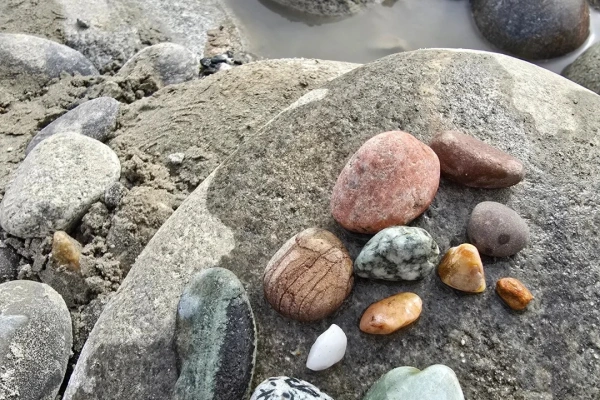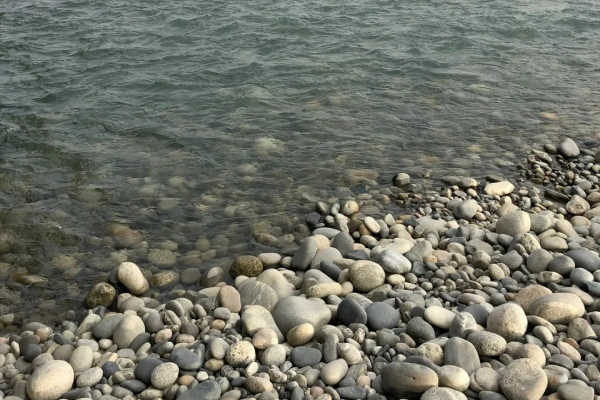Hotan River
Historical Overview
The Hotan River holds a long and illustrious history. It has been a crucial part of the ancient Silk Road, facilitating trade and cultural exchanges between the East and the West. Along its banks, numerous ancient cities and settlements have flourished, leaving behind a wealth of archaeological sites and historical relics. These remnants tell stories of the river's role in the development of the region's economy, politics, and society. Over time, the Hotan River has witnessed the rise and fall of dynasties, and its waters have nourished generations of people, making it a symbol of resilience and continuity.
Structural Layout
The Hotan River has a well - defined structural layout shaped by its natural geography. The river itself meanders through valleys and plains, creating a diverse ecosystem. Along its banks, there are different zones. In the lower reaches, there are fertile agricultural areas where crops are grown using the river's water for irrigation. As you move upstream, the landscape becomes more rugged, with mountains and hills framing the river. There are also several small towns and villages scattered along the river, each with its own unique charm and cultural characteristics. These settlements are often connected by bridges and roads, making it convenient for visitors to explore the area.
Major Attractions
Hotan Bazaar: This is one of the most vibrant and colorful attractions along the Hotan River. The bazaar is a bustling hub of activity, where you can find a wide variety of goods, from traditional handicrafts such as carpets, jade, and silk to local spices, fruits, and snacks. Walking through the narrow alleys of the bazaar, you can immerse yourself in the local culture, interact with friendly vendors, and experience the lively atmosphere of a traditional Xinjiang market.
Hotan Jade Market: As the name suggests, this market is dedicated to the famous Hotan jade. Hotan jade has been highly prized for thousands of years for its beauty and quality. At the jade market, you can see a dazzling array of jade products, including jewelry, ornaments, and sculptures. You can also learn about the history and craftsmanship of Hotan jade from the knowledgeable sellers.
Niya Site: An important archaeological site located near the Hotan River, the Niya Site offers a glimpse into the ancient civilization that once thrived here. Excavations have uncovered well - preserved ruins of houses, temples, and tombs, as well as a large number of artifacts such as pottery, coins, and manuscripts. These findings provide valuable insights into the social, economic, and cultural aspects of the ancient Niya people.
Desert Poplar Forest: Along the banks of the Hotan River, there are stretches of desert poplar forests. These unique trees are well - adapted to the arid environment and form a beautiful contrast against the backdrop of the river and the desert. Walking through the forest, you can enjoy the peaceful atmosphere, listen to the rustling of the leaves, and observe the local wildlife, such as birds and small mammals.
Hotan River Sunset Viewing Point: For a truly unforgettable experience, head to the Hotan River sunset viewing point. As the sun begins to set, the sky is painted in a riot of colors, reflecting off the surface of the river. The combination of the golden light, the gentle flow of the river, and the surrounding landscape creates a magical scene that is perfect for photography and relaxation.
Suggested Itineraries
Half - Day Classic Route (3 - 4 hours):
Start at Hotan Bazaar → Explore the various stalls and buy some local souvenirs → Visit Hotan Jade Market → Learn about Hotan jade and perhaps purchase a small piece → Head to the Desert Poplar Forest for a short walk and enjoy the natural scenery → End the tour at a nearby riverside café for a refreshing drink.
Highlights: Experience the local market culture, learn about Hotan jade, and enjoy the beauty of the desert poplar forest.
One - Day Extended Route (6 - 8 hours):
Begin at the Niya Site → Take a guided tour to learn about the ancient civilization → Have a picnic lunch near the site → Visit Hotan Bazaar and Hotan Jade Market in the afternoon → In the late afternoon, go to the Hotan River Sunset Viewing Point to watch the sunset → Return to your accommodation.
Highlights: A comprehensive exploration of the historical and cultural attractions along the Hotan River, combined with a beautiful sunset experience.
Two - Day Comprehensive Route:
Day 1: Arrive in Hotan and check into a hotel. In the afternoon, visit Hotan Bazaar and Hotan Jade Market, getting a feel for the local culture and shopping for some unique items. In the evening, enjoy a traditional Xinjiang dinner at a local restaurant.
Day 2: Start early and visit the Niya Site for a detailed exploration. After lunch, head to the Desert Poplar Forest for a leisurely walk and some nature photography. In the late afternoon, go to the Hotan River Sunset Viewing Point to witness the breathtaking sunset. Spend the night in Hotan, reflecting on your wonderful experience.
Highlights: A relaxed and in - depth exploration of the Hotan River area, allowing you to fully immerse yourself in its history, culture, and natural beauty.
Ticket Purchase
Online: You can book tickets for some of the attractions along the Hotan River, such as the Niya Site, through online travel platforms or the official websites of the scenic areas. Online booking offers convenience as you can purchase tickets in advance and avoid long queues at the ticket offices. Some platforms may also offer discounts or package deals.
On - Site: Tickets for most attractions can be purchased at the ticket offices located at the entrance of each site. However, during peak tourist seasons, there may be long lines, so it is advisable to arrive early.
Prices: The ticket prices vary depending on the attraction. For example, the entrance fee to the Niya Site may be around ¥50 - ¥80 for adults, with discounts available for students, seniors, and children. It is recommended to check the official websites or contact the attractions directly for the most up - to - date price information.
Transportation
By Plane: If you are coming from a distant city, you can fly to Hotan Airport. From the airport, you can take a taxi or a shuttle bus to your accommodation in Hotan city.
By Train: Hotan has a railway station, and you can take a train from major cities in Xinjiang or other parts of China. Once you arrive at the railway station, you can use local transportation options such as buses or taxis to reach your destination.
By Bus: There are long - distance buses connecting Hotan with other cities and towns in Xinjiang. You can check the bus schedules and book tickets in advance at the local bus stations or online travel platforms.
Local Transportation: Within Hotan city and along the Hotan River area, you can use taxis, buses, or even rent a bicycle or a car to get around. Taxis are a convenient option for short - distance travel, while buses are more economical for longer journeys. Renting a car gives you more flexibility to explore the area at your own pace.
Best Time & Tips
Best Time: The best time to visit the Hotan River area is in spring (April - May) and autumn (September - October). During these seasons, the weather is mild and pleasant, with clear skies and comfortable temperatures. Summers can be extremely hot, especially in the desert areas near the river, while winters are cold and dry.
Peak Hours: Try to avoid visiting the popular attractions during the peak hours of 10 AM - 2 PM, as they can be crowded. It is better to arrive early in the morning when the sites open or later in the afternoon.
Essentials: Wear comfortable walking shoes as you will be doing a lot of walking when exploring the attractions. Bring sunscreen, a hat, and sunglasses to protect yourself from the strong sun. Also, carry plenty of water, especially in summer, to stay hydrated. If you plan to visit the desert areas, bring appropriate clothing to protect yourself from the sand and wind.
Photography: Photography is generally allowed at most attractions along the Hotan River, but be respectful of the local culture and religious sites. Do not use flash photography inside temples or other sensitive areas. Also, be mindful of other visitors and do not block their view while taking photos.
Prohibited Items: Some attractions may have restrictions on certain items, such as large bags, selfie sticks, and drones. Check the regulations of each site in advance to avoid any inconvenience. Additionally, respect the local customs and traditions, and do not bring any prohibited items into the country or the region.
Contact Us
What Our Clients Say?
Based on 10,000+ traveler reviews















